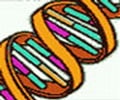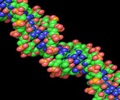The genome of an extinct Australian frog was revived and reactivated by a team of scientists.

The bizarre gastric-brooding frog, Rheobatrachus silus - which uniquely swallowed its eggs, brooded its young in its stomach and gave birth through its mouth - became extinct in 1983.
But the Lazarus Project team has been able to recover cell nuclei from tissues collected in the 1970s and kept for 40 years in a conventional deep freezer. The "de-extinction" project aims to bring the frog back to life.
In repeated experiments over five years, the researchers used a laboratory technique known as somatic cell nuclear transfer.
They took fresh donor eggs from the distantly related Great Barred Frog, Mixophyes fasciolatus, inactivated the egg nuclei and replaced them with dead nuclei from the extinct frog.
Some of the eggs spontaneously began to divide and grow to early embryo stage - a tiny ball of many living cells.
"We are watching Lazarus arise from the dead, step by exciting step," the leader of the Lazarus Project team, Professor Mike Archer, of the University of New South Wales, in Sydney said.
Source-ANI
 MEDINDIA
MEDINDIA




 Email
Email








